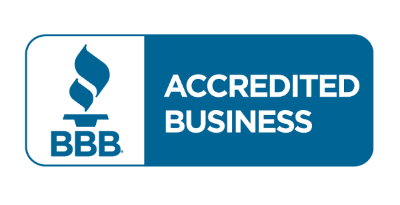
What Are Functional Foods?
Detoxification Support Disease Nutrition
Have you ever wondered how you can enrich your diet further than getting the basic nutrients and energy you need? Then perhaps you should add some functional foods to your daily diet.

What Are Functional Foods?
Detoxification Support Disease Nutrition
Have you ever wondered how you can enrich your diet further than getting the basic nutrients and energy you need? Then perhaps you should add some functional foods to your daily diet.
What Are Functional Foods?
First coined in Japan, the term refers to a particular type of food group. Functional foods are a type of food that provides more than basic nutrition. They are nutrient-dense foods that can play a specific, beneficial role in the body.
These foods can help prevent disease and enhance certain functions of your physiology.
You don't need functional food in your diet to survive, but they can help improve your overall health and wellbeing if you do include them. They are often foods that are fortified or enhanced with extra nutrients.
What Are Nutraceuticals?
You may also hear functional foods referred to as nutraceuticals. It's simply a component of your food that provides a medical or health benefit.
The compounds that provide health benefits may occur naturally in the food or be added artificially.
Types of Functional Foods and Their Benefits
To look at the different types of functional foods, let's divide them into two categories. Those foods are naturally considered functional foods due to the density of their nutrients and those which are fortified.
Naturally Occurring Functional Foods:
These are the functional foods that exist naturally:
Green Vegetables
It's well known that adding extra greens to your diet has health benefits. Foods like spinach, kale, and broccoli are rich in iron, vitamins A and C, and dozens of micronutrients.
Packing in the greens can help reduce your risk of heart disease, obesity, and high blood pressure.
Fruit
Berries, oranges, apples, bananas; every piece of fruit you pick up is a powerhouse of nutrients. They are full of antioxidants which can help your body combat oxidative stress and prevent the early onset of chronic disease.
Nuts and Seeds
All nuts and seeds contain macro and micronutrients your body needs to thrive, from healthy fats and protein to fiber minerals like copper and zinc and vitamins A, C, and E.
Add nuts to your diet for skin health, brain function, and heart health.
Fermented Foods
Adding foods such as tempeh, miso, kimchi, kefir, and kombucha to your diet can positively benefit the balance of bacteria in your gut.
The microbiome is the balance of probiotic and prebiotic bacteria in your gut. It's also linked to a healthy, functioning immune system. If you have a healthy microbiome, you will have improved overall health.
Wholegrains
Regularly eating whole grains can help reduce your risk of heart disease, obesity, and diabetes. They help keep you full for longer and help balance your blood sugar levels.
Eat whole grains such as brown rice, bulgar wheat, and oats.
Legumes
Beans, chickpeas, peas, and lentils are great ways to pack extra plant protein into your diet. You can also use them as a great iron, potassium, and magnesium source.
Legumes are one of the most nutrient-dense foods on the planet and an easy way to incorporate functional foods. They help nourish your body and give you the nutrients to perform optimally.
Herbs and Spices
Adding herbs and spices to your meals is another easy way to incorporate functional foods filled with micronutrients and powerful antioxidants.
Herbs and spices effectively maintain blood sugar levels and reduce inflammation in the body, among multiple other benefits.
Fortified Functional Foods:
Here are some fortified functional foods which you can add to your balanced diet:
- Low sugar cereals
- Yogurts, milk, and cheese (often fortified with calcium)
- Margarine
- Plant milk such as almond, oat, cashew, soya, and hazelnut
- Fortified drinks such as orange juice
- Fortified bread and pasta (make sure it's whole grain)
- Fortified eggs
How to Incorporate Functional Foods Into Your Diet
Eating healthy and ensuring you get the right balance of nutrients can be difficult if you don't know what to do.
The best way to do it is by learning what foods you should be eating and then finding a few healthy whole-food recipes that are easy to cook.
Having a plan and planning ahead are also ideal for eating a balanced diet. If you always have healthy ingredients in your house, it will be easier to cook something wholesome than ordering a take-out.
Meal prep is another great way to make sure you eat healthily. Prepare several meals at the weekend, which you can grab from the fridge or freezer throughout the week when you're busy and on the go.
Here are some more ideas for incorporating functional foods:
- Try adding turmeric or cinnamon to your oatmeal or using them in a curry or smoothie.
- Eat a balanced breakfast to pack in as many nutrients as you can at the start of the day, maybe a smoothie with spinach or kale.
- Always keep dips and spreads in your fridge to snack on something healthy like hummus and veggies.
What Are the Results of Eating Functional Foods?
If you eat the right balance of functional foods, you may find more energy, have better moods and have an improved overall sense of wellbeing.
Eating functional foods can protect you from nutrient deficiencies which may cause specific health problems. For example, an iron deficiency can result in anemia.
In the long term, eating functional foods can help protect you against disease and inflammation in the body.
Make Healthy Eating a Habit
Once you get into eating a healthy, balanced diet, it will become natural for you. Functional foods will automatically become part of this routine, and you will notice the benefits.
Give yourself time to adjust to a new eating pattern, and don't punish yourself if you go off track; building new habits takes time.
For support with making the transition to a healthy lifestyle, check out our wellness education.

Jay Todtenbier is an original founder of SupplementRelief.com in 2010 and has operated the business ever since. He is also a tennis instructor and gospel musician. Formerly he spent 25 years in business development, technology and marketing with startups and major corporations having gone through the tech boom in Silicon Valley in the 90s. He became passionate about, and began studying and practicing Wellness as a Lifestyle after experiencing chronic, personal health challenges including depression, auto-immune disorders, and being overweight that impacted his ability to live a healthy, vibrant life. Since then, he has been an advocate for healthier living encouraging others to live better through making small, gradual changes to lifestyle behaviors relating to whole-foods nutrition, stress management, reasonable exercise, proper sleep, and the use of targeted, high-quality supplements.
Learn more about Jay Todtenbier.
-
 Discussion Forum
Questions or Feedback?
Discussion Forum
Questions or Feedback?Ask questions. Share your thoughts. Note that we cannot answer questions relating to specific medical conditions - please refer those to your qualified healthcare provider.
Post a new Comment or Reply to an existing one. Help for using the Discussion Forum.
 Discussion Forum Help
Discussion Forum Help
Comments are displayed in order of the last one posted so the most recent one is at the top and the oldest one at the bottom.
Replies within a Comment are displayed in reverse order with the oldest one at the top and the most recent one at the bottom.
Each post identifies
 who made the post and the
who made the post and the  date and time the post was made.
date and time the post was made.Mouse over the icons for tooltips that explain what they mean.

If you see this icon you can attach an Audio file to your post.

If you see this icon you can attach a Document file to your post.

If you see this icon you can attach an Image file to your post.

If you see this icon you can attach a Video file to your post.
You will see the
 Ban icon (Report Post as SPAM) immediately following the Timestamp of the post. Click this icon if you feel strongly that the content posted is not appropriate and should be reviewed by the Forum Moderator. You will be provided with a confirmation dialog to be sure you wish to submit this post for review. If submitted, the Forum Moderator will be notified to review the post and will determine what type of action to take.
Ban icon (Report Post as SPAM) immediately following the Timestamp of the post. Click this icon if you feel strongly that the content posted is not appropriate and should be reviewed by the Forum Moderator. You will be provided with a confirmation dialog to be sure you wish to submit this post for review. If submitted, the Forum Moderator will be notified to review the post and will determine what type of action to take.Click
 in the upper right corner of this Help modal or anywhere on the web page outside of the modal to exit Help.
in the upper right corner of this Help modal or anywhere on the web page outside of the modal to exit Help.
![]() Session Expired from Inactivity
Session Expired from Inactivity
Do you want to?
9618 Jefferson Highway, Suite D-191
Baton Rouge LA 70809-9636
(888) 424-0032 |
support@supplementrelief.com
* Disclaimer: This page is available exclusively for SupplementRelief.com clients. None of the information on this website is intended to replace your relationship with your healthcare provider(s). Nothing should be considered medical advice. The information, knowledge, and experience shared on this website are the opinions of SupplementRelief.com. This site and its content are intended to enhance your knowledge base as YOU MAKE YOUR OWN HEALTHCARE DECISIONS in partnership with your qualified health professional.
* These statements have not been evaluated by the Food and Drug Administration. These products and services are not intended to diagnose, treat, cure, or prevent disease.
* There is NO GUARANTEE OF SPECIFIC RESULTS for the products or services offered, and the RESULTS CAN VARY for each individual. Any results claimed by our customers are based on individual experiences that are unique and cannot be guaranteed.
FirstFitness Nutrition and NuMedica may be promoted and sold on the internet ONLY by Authorized Resellers who have been approved by and have registered their website domain with these companies. They strictly prohibit, and actively monitor, the UNAUTHORIZED SALE or RESALE of their products in ALL online public shopping portals including Amazon, eBay, and others and into other countries. All products purchased in SupplementRelief.com are for PERSONAL USE ONLY and CANNOT BE RESOLD to others. Please report violations of Reseller Policy directly to FirstFitness Nutrition at 800.621.4348 and to NuMedica at 800.869.8100.
The content and photographs on this website are copyrighted or Licensed Material and may not be downloaded for other than personal use. Republication, retransmission, reproduction, or any other use of the content or photographs is prohibited. ©2010-2024 SupplementRelief.com.
Are you sure you want to remove this item?

